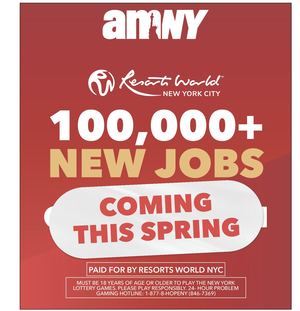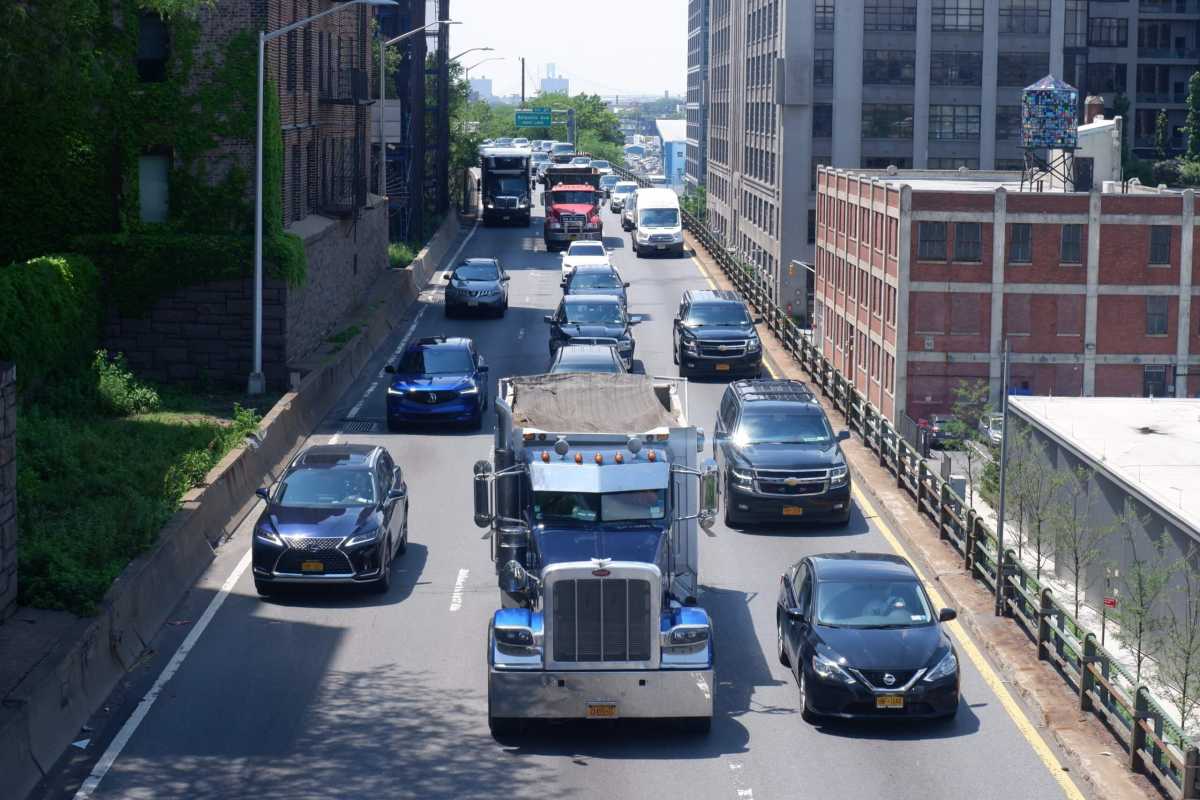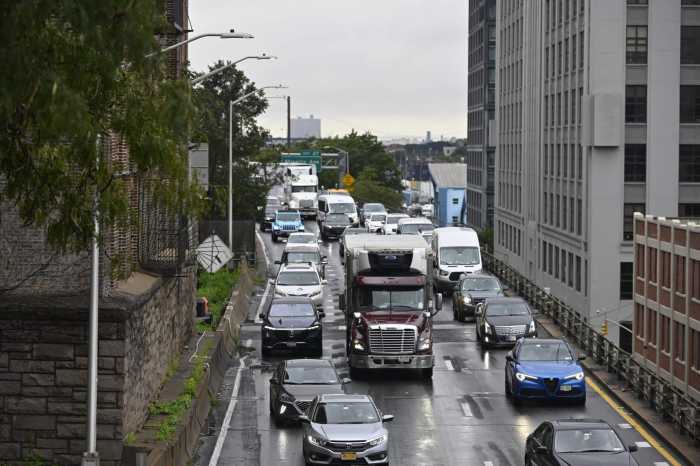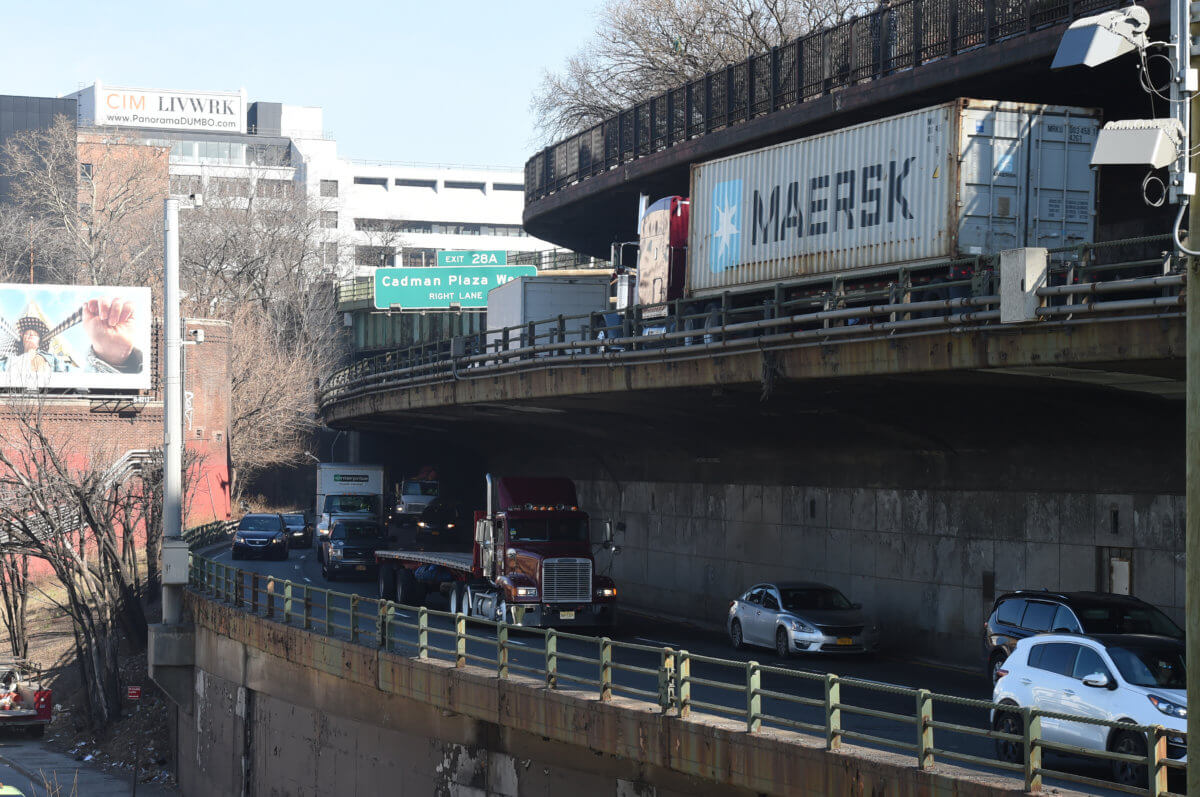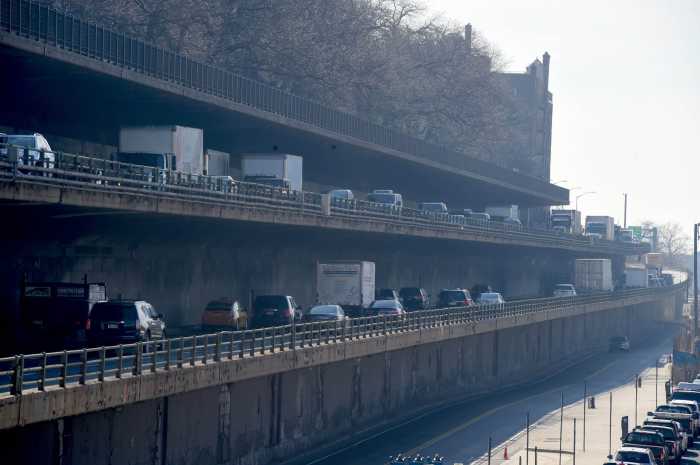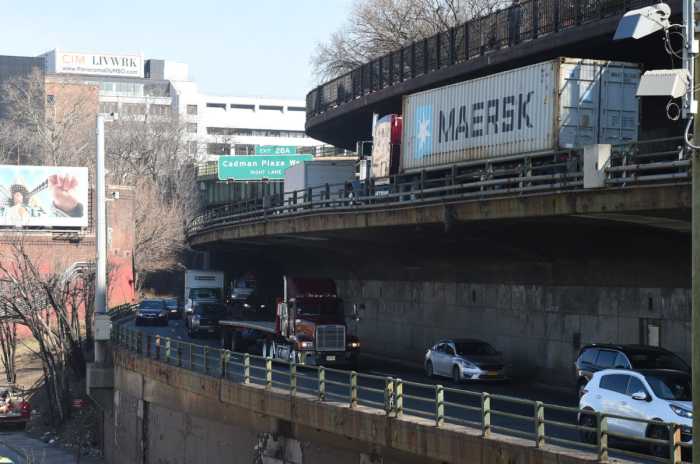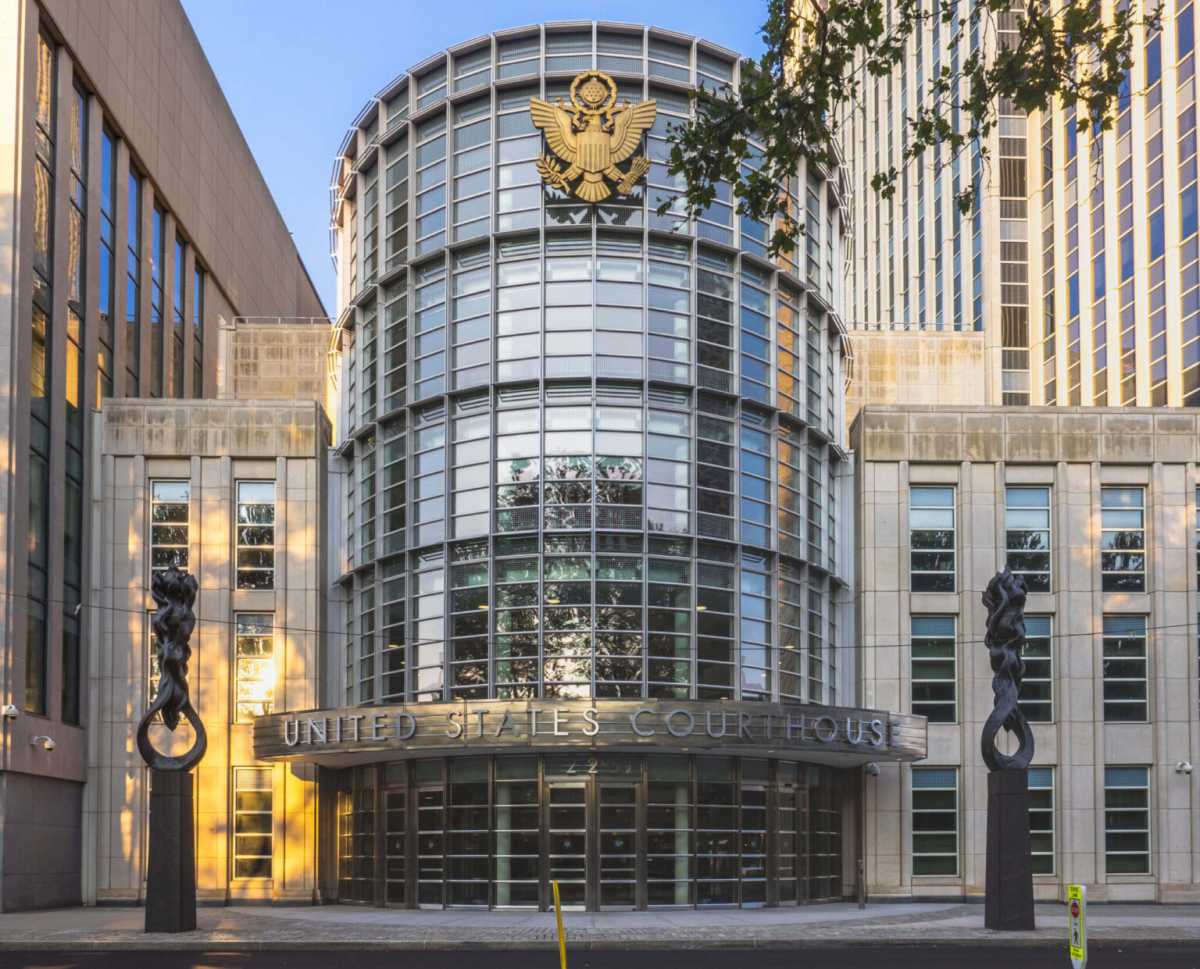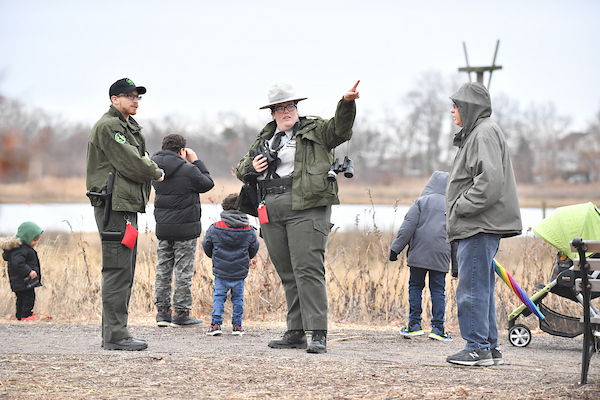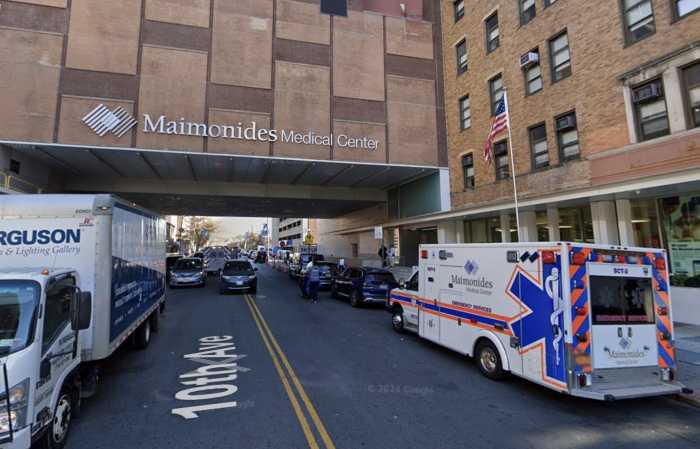In a fit of deja vu, the city is once again considering building a “temporary highway” through Brooklyn Heights to redirect traffic snagged by the eventual reconstruction of the crumbling Brooklyn-Queens Expressway (BQE).
Planning and community engagement remain underway with nothing finalized, but the Department of Transportation told reporters on Tuesday that when reconstruction finally begins on the BQE’s teetering city-owned triple cantilever, two options are on the table for redirecting the considerable car and truck traffic that use the freeway, neither of which are particularly palatable.
One option is DOT could close sections of the cantilever on nights and weekends to allow for construction work, but that would require traffic be diverted onto side streets — potentially leading to unseemly levels of truck traffic through residential neighborhoods.
The other option is a “temporary structure” adjacent to the existing BQE allowing traffic to bypass the sections under construction. The agency says such a structure would take about a year to build and would most likely stand for two-to-three years amid reconstruction.
“Bottom line is, at some point we have to decide, which pain are we going to be able to tolerate,” one DOT official told reporters during the “background briefing” ahead of a community workshop Tuesday night.
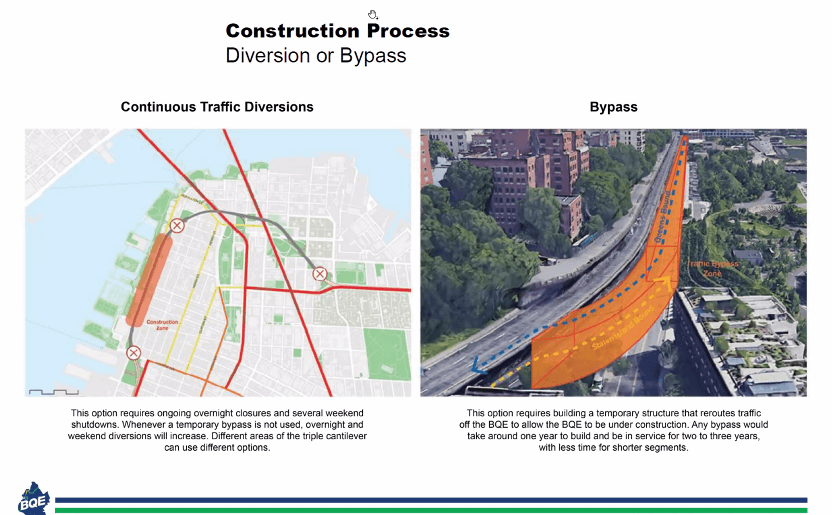
The possibility of a temporary highway had previously been floated at DOT’s December workshop on reimagining the BQE.
No final decisions have been made, DOT officials noted, and thus the agency declined to answer most of reporters’ questions about such a proposal. The agency argues that not going with the bypass option could lead to even more delays and inflated construction costs.
“As we’ve made clear, this administration has not yet finalized a construction process, which will depend on community feedback, the preferred design concept, and practical construction constraints,” said DOT press secretary Vin Barone. “We’re dedicated to pursuing a long-term fix for the BQE to build the safe, resilient structure we need and will take every measure possible to minimize the impact on adjacent neighborhoods.”
The plan is reminiscent of a highly controversial idea put forth by former Mayor Bill de Blasio in 2018 to close the beloved Brooklyn Heights Promenade, situated above the cantilever, for several years and build a temporary highway atop it during reconstruction. The proposal led to substantial outcry from Brooklyn Heights residents and other fans of the Promenade, and was ultimately scrapped.
On Tuesday, one of the few concrete details DOT officials could tell reporters was that building a temporary highway “at grade” with the Promenade is not under consideration. Left unanswered was where exactly such a structure would be placed and how it could be built in a year, cost-efficiently and adhering to modern safety standards, only to be torn down a few years later.
“While we’re aware that DOT has resurrected the temporary highway idea, they haven’t provided any information on any of the relevant details,” said Lara Birnback, executive director of the Brooklyn Heights Association, in an email. “How it would be built, where it would go, etc.”
DOT officials also shared that they have refined their three overarching design principles for reconstructing the cantilever, part of the 1.5-mile city-owned section of the BQE. All would involve either the partial or total reconstruction of the cantilever’s retaining wall, and would seek to reconnect Brooklyn Heights to the waterfront and Brooklyn Bridge Park, which were separated by the construction of the highway in the 1940s and 50s.
Each of the proposals — nicknamed the Terraces, the Lookout, and the Stoop — would see the unsightly triple cantilever covered up by greenspace that connects the Promenade to Brooklyn Bridge Park.
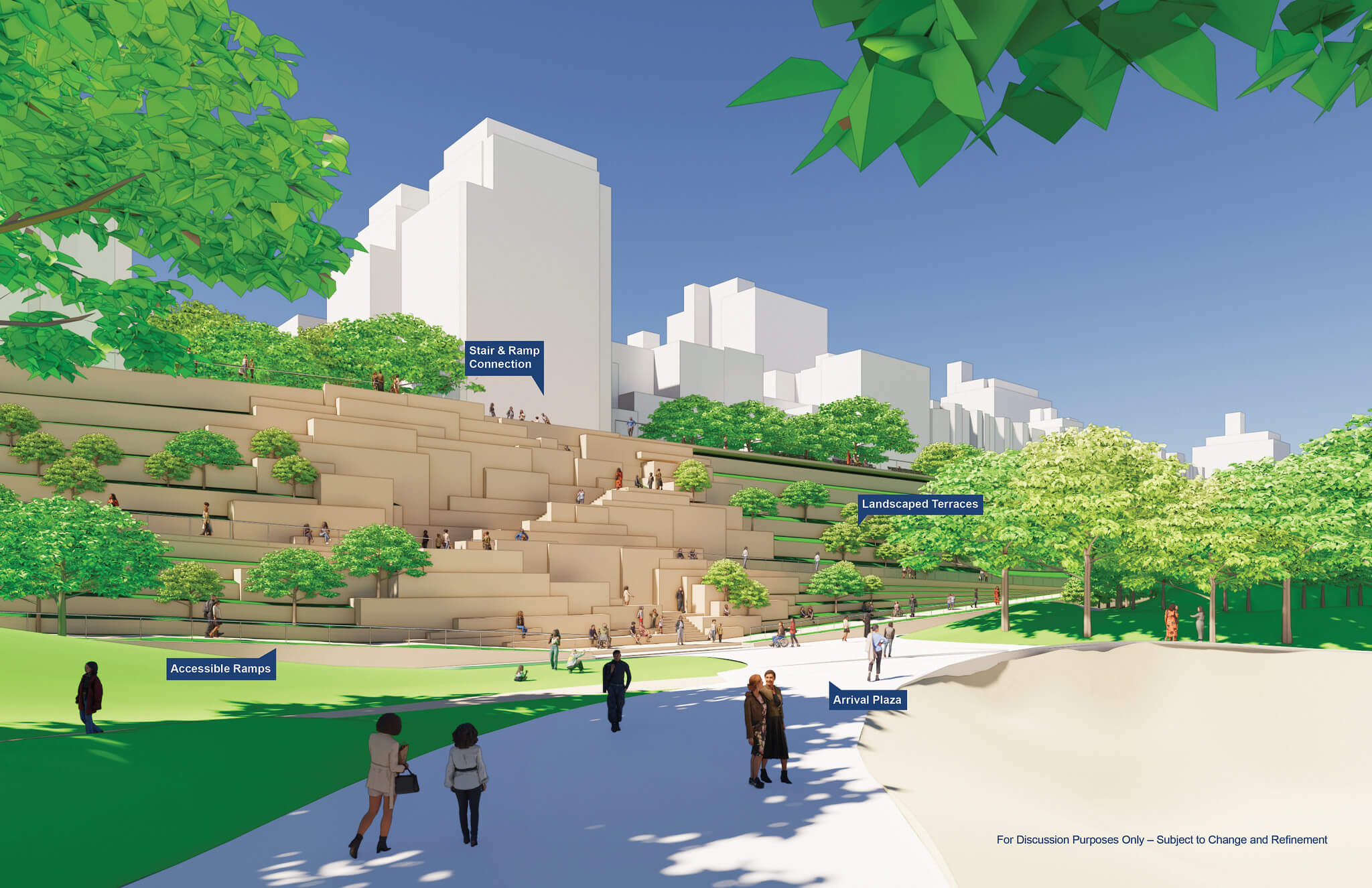
“Today brings us one step closer to building a BQE that serves all New Yorkers,” Mayor Eric Adams said in a statement. “This administration is taking a bold approach, repairing a crumbling eyesore and delivering transformational open space to residents and visitors alike. While much work remains, these refined concepts mark another milestone to create a reimagined BQE Central.”
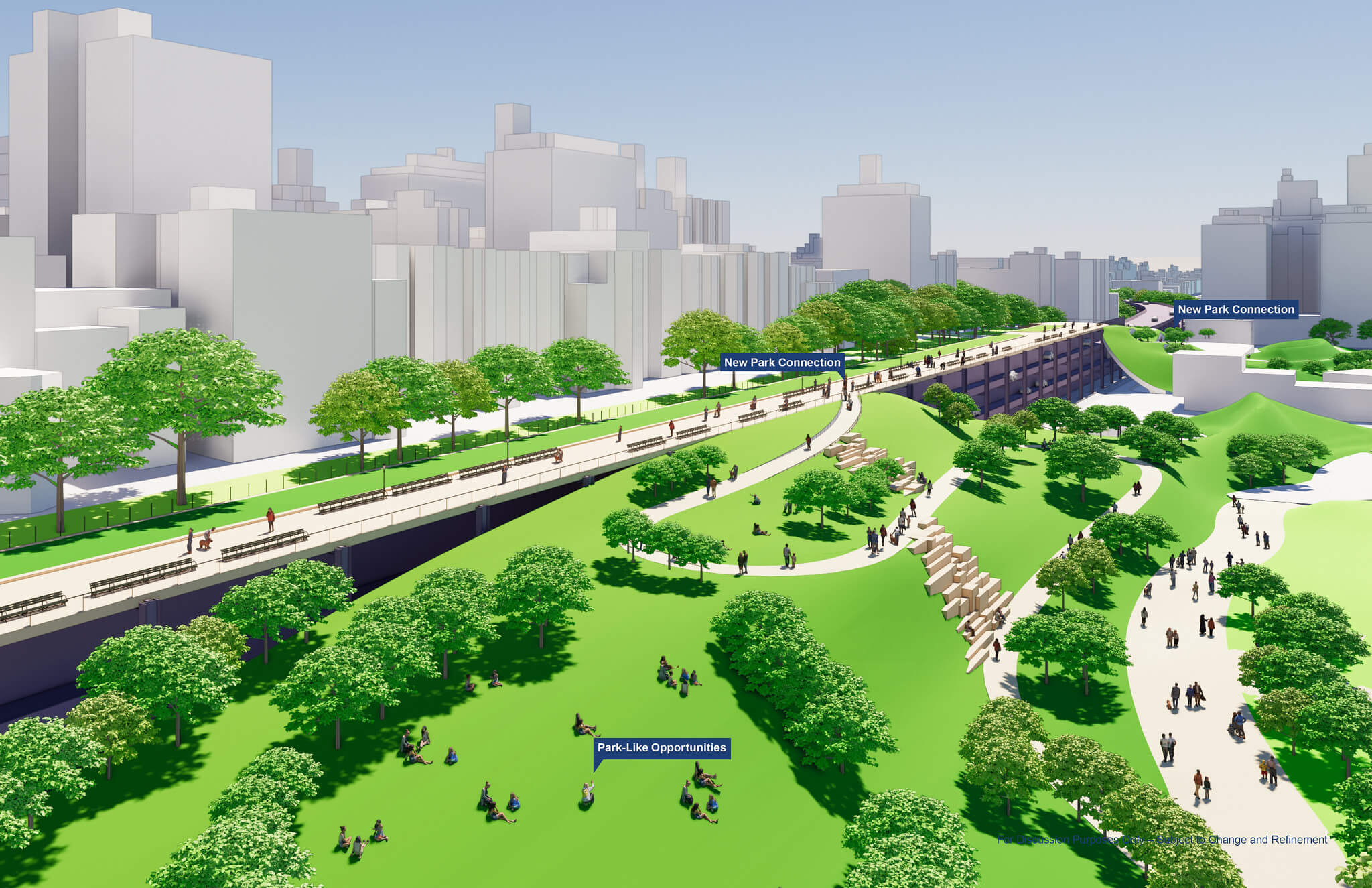
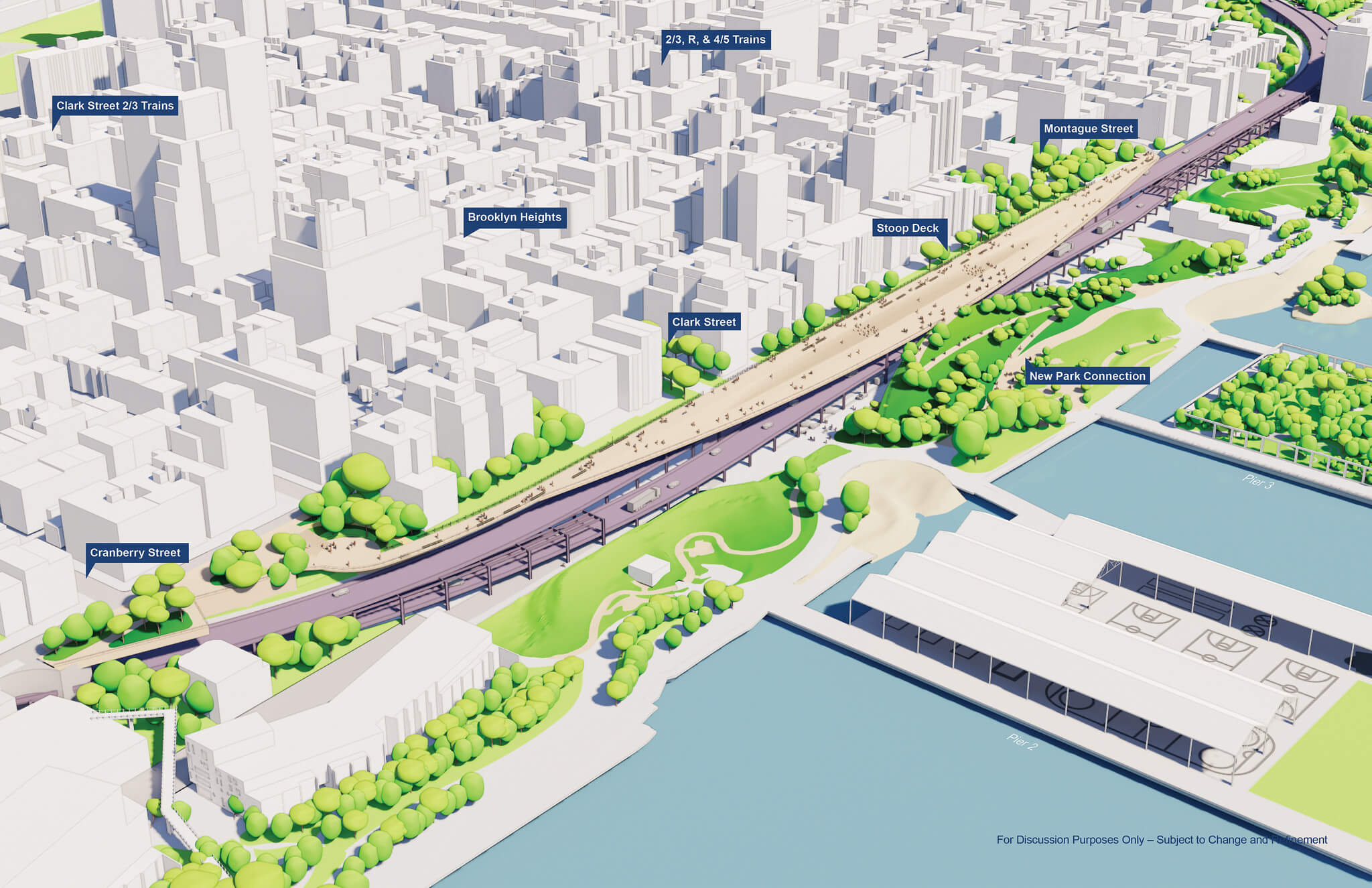
An “expert panel” under de Blasio previously warned the highway could be unsafe to use as early as 2026 barring substantial repair or replacement work. But last week, the city announced the long-delayed project would be delayed again, this time to study whether to keep the highway’s configuration at the current two lanes or expand it back to three. While the city intends to apply for federal infrastructure grants this year, environmental review has been punted from this spring to the fall.
DOT also presented potential improvements for the rest of the city-owned section, including bike, pedestrian, and accessibility upgrades at Columbia Heights, pedestrian-priority areas near the Fulton Ferry Landing, and expanded greenspace along the Brooklyn Bridge approach ramp.
Nonetheless, advocates remain miffed that only the relatively short city-owned section is up for reimagination; the rest of the highway is owned by the state, which has no plans to change anything.
Still, it’s not as if the Adams administration’s plan for the city-owned section has been popular with locals, either, which is partially why the agency opted for another study regarding lane configuration. Various local groups, advocates, elected officials, and business leaders have called for the cantilever to be torn down entirely.
In that vein, some advocates say the temporary highway option is a reversion to outdated thinking.
“Solving one highway’s problems with another highway is no solution,” said Kathy Park Price, the Brooklyn Organizer at Transportation Alternatives, in a statement. “Instead of building new highways, we need to find a solution that doesn’t lead to traffic diversion on neighboring streets. New York City must find a solution to the problems the existing BQE causes and reconnect the communities it tore apart.”
Read more: MTA Modernizes G Line Signals with $368M
